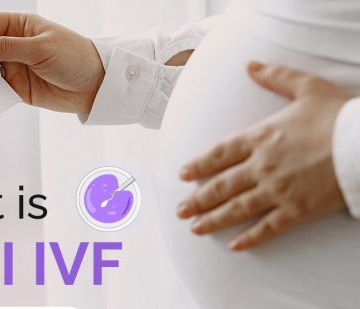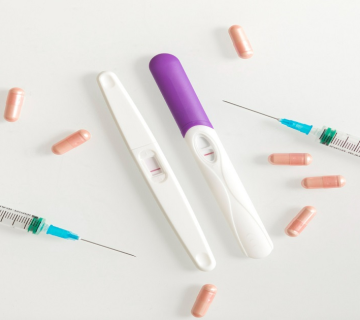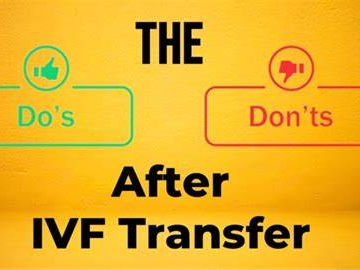
Deciding Which Embryo to Transfer – Your Ultimate Guide to IVF Success
Choosing which embryo to transfer during in vitro fertilization (IVF) can feel like standing at a crossroads. It’s a big decision—one that could shape your family’s future. You might be wondering: How do I pick the best embryo? Should I transfer one or two? What if my embryos aren’t perfect? Don’t worry—you’re not alone, and this guide is here to help.
We’ve dug into the top resources online, analyzed what they cover, and gone beyond to bring you a fresh, detailed, and practical roadmap. Whether it’s understanding embryo quality, figuring out the transfer process, or exploring the latest tech like AI, we’ve got you covered. Think of this as your friendly companion, breaking down the science into bite-sized pieces with tips you can actually use.
Let’s dive in and unravel the mystery of embryo selection together!
Understanding Embryo Quality – What Makes a Winner?
Embryo quality is the heart of this decision. It’s like picking the ripest apple from a tree—not every fruit is the same, and some have a better shot at thriving. Doctors and embryologists look at three main things to judge an embryo: how fast it grows, how it looks, and what its genes say. Let’s break these down.
Development Speed – Timing Is Everything
Embryos don’t all grow at the same pace, and their speed can hint at how strong they are. Imagine runners in a race—some sprint ahead, while others take their time. Here’s what happens:
-
- Day 3 (Cleavage Stage): After fertilization, embryos should have 6 to 10 cells by Day 3. If they’ve got fewer, they might be lagging; too many, and they could be overeager, which isn’t always good.
-
- Day 5 (Blastocyst Stage): By Day 5, the goal is a blastocyst—a little ball with a fluid pocket, an inner cell mass (ICM) that’ll become the baby, and a trophectoderm (TE) that’ll form the placenta. Embryos hitting this milestone by Day 5 often do better than those taking until Day 6 or 7.
Science Says: A 2021 study in Human Reproduction found that Day 5 blastocysts have a 10-15% higher implantation rate than Day 6 ones. But slowpokes can still win—some Day 6 embryos lead to healthy babies, especially if they look good otherwise.
Tip: Ask your clinic, “Which day did my embryos reach blastocyst?” It’s a simple question that gives you a clue about their potential.
Morphology – Judging by Looks
Morphology is all about appearances. Embryologists peek through a microscope and score embryos like judges at a beauty pageant. Here’s how it works:
-
- Day 3 Check: They count cells (aiming for 8), check if they’re even-sized, and look for fragmentation—those pesky bits of debris. A top-notch Day 3 embryo is symmetrical with little to no mess.
-
- Day 5 Grading: Blastocysts get a more detailed grade, like 4AA. The number (1-6) shows how expanded it is, and the letters (A-C) rate the ICM and TE. A 4AA is a rockstar—fully expanded with excellent cell quality.
Real Talk: Grading isn’t perfect. It’s a bit subjective, and different clinics might score differently. A “B” grade at one place could be an “A” somewhere else.
Action Step: Get your embryo report and ask, “Can you explain these grades?” Write down what they say—it’ll help you feel in control.
Genetic Screening – Peeking at the Blueprint
Preimplantation Genetic Testing for Aneuploidy (PGT-A) is like a DNA detective. It checks if an embryo has the right number of chromosomes (46). Here’s the scoop:
-
- Euploid Embryos: These have the correct chromosome count and a higher chance of sticking around.
-
- Aneuploid Embryos: These have extra or missing chromosomes, often leading to failed implantation or miscarriage.
When It’s Useful: PGT-A shines if you’re over 35, have had miscarriages, or want to pick from a big batch of embryos. But it’s not a must—some skip it and do fine.
Expert Insight: Dr. Orion Nightingale, a fertility guru, says, “PGT-A can boost confidence in your choice, but it’s not foolproof. About 10% of ‘normal’ embryos still don’t implant—biology’s tricky like that.”
Checklist:
-
- ✔️ Ask if PGT-A fits your case.
-
- ❌ Don’t assume it’s the only way to succeed—it’s one tool, not the whole toolbox.
How Many Embryos Should You Transfer? – One or More?
Once you’ve got quality figured out, the next big question is quantity. Should you transfer one embryo or roll the dice with two? It’s a balancing act between boosting your odds and keeping things safe.
Single Embryo Transfer (SET) – The Safe Bet
SET means putting back one embryo at a time. It’s the go-to for many, especially if you’re younger or have top-tier embryos.
-
- Pros: Cuts the chance of twins or triplets, which can mean fewer health risks like premature birth.
-
- Cons: Might take more tries to get pregnant.
Data Point: The CDC’s 2022 IVF report shows SET now makes up 70% of transfers in women under 35, with a 50%+ success rate per cycle when using good embryos.
Multiple Embryo Transfer (MET) – Higher Stakes
MET—usually two embryos—ups your pregnancy odds per transfer but comes with a catch.
-
- Pros: Better shot at success, especially if embryos aren’t perfect or you’re older.
-
- Cons: Twins happen in about 20-30% of cases, raising risks for mom and babies.
Science Says: A 2020 Cochrane review found double embryo transfer (DET) boosts live birth rates by about 10% over SET, but twin rates jump from near-zero to 25%. That’s a trade-off to chew on.
What Tips the Scales?
-
- Your Age: Under 35? SET’s usually enough. Over 38? MET might make sense.
-
- Embryo Quality: Got a 5AA blastocyst? One might do. Only Bs and Cs? Two could hedge your bets.
-
- Past Results: Failed cycles might nudge you toward MET.
Practical Tip: Picture this—you’re baking cookies. One perfect dough ball might be all you need, but if they’re crumbly, tossing in two could save the batch. Talk to your doctor about your “recipe.”
The Transfer Process – Where Skill Meets Science
Picking the embryo is half the battle; getting it into your uterus is the other. The transfer is quick—think 10 minutes—but it’s a make-or-break moment.
Why Your Doctor’s Skill Matters
Not all doctors are transfer wizards. A shaky hand or bad timing can tank your odds.
-
- Proof: A FertilityIQ study showed success rates can differ by 15-20% between doctors at the same clinic.
-
- What to Look For: Experience (hundreds of transfers) and finesse (they take it slow and steady).
Expert Insight: Dr. Caspian Sterling, a top IVF doc, warns, “A transfer’s like landing a plane—smooth and precise beats fast and sloppy every time.”
Action Step: Ask your clinic, “Who’s doing my transfer, and what’s their track record?” It’s your right to know.
Fresh vs. Frozen – Timing the Drop
-
- Fresh Transfer: Done days after egg retrieval. It’s straightforward but might not suit everyone—your body could still be reeling from hormones.
-
- Frozen Embryo Transfer (FET): Embryos are cryopreserved, then thawed for a later cycle. It lets your uterus chill out first.
Latest Research: A 2023 study in Fertility and Sterility found FET edges out fresh transfers by 5-10% in success rates, especially with PGT-A embryos. Why? Your lining gets a reset.
Tip: If you’re doing PGT-A, FET’s almost a no-brainer. Ask, “Does my body need a break before transfer?”
Transfer Day Prep – Setting the Stage
-
- Medicated Cycle: Hormones like progesterone prep your lining. It’s controlled but can feel like a rollercoaster.
-
- Natural Cycle: Uses your body’s rhythm. Less meds, more zen—if your cycle cooperates.
Must-Do: Most transfers use ultrasound to guide the catheter. It’s like GPS for your embryo.
Transfer Day Checklist:
-
- ✔️ Fill your bladder (helps the ultrasound see better).
-
- ✔️ Wear comfy clothes—no tight jeans!
-
- ❌ Skip coffee—it can make your uterus twitchy.
Beyond the Basics – New Tech Changing the Game
IVF isn’t stuck in the past. Cool stuff like AI and fancy cameras are shaking up embryo selection. Let’s peek at what’s new.
AI in Embryo Selection – The Smart Pick
Artificial intelligence is like a super-smart assistant, scanning embryo pics to predict winners.
-
- How It Works: AI studies thousands of embryo images and their outcomes, spotting patterns humans might miss—like tiny quirks in cell division.
-
- Where It’s At: Early days. A 2022 Nature paper showed AI beating traditional grading by 10% in predicting pregnancy.
Expert Insight: Dr. Ophelia, a tech-savvy fertility doc, predicts, “In five years, AI could be standard. It’s like upgrading from a flip phone to a smartphone.”
What It Means for You: Not everywhere yet, but ask your clinic, “Do you use AI or plan to?”
Time-Lapse Imaging – Watching Embryos Grow
This tech snaps pics of embryos every few minutes, no microscope needed.
-
- Perks: Shows growth in real-time—think of it as a baby’s first movie. Spots hiccups in development.
-
- Catch: Not all clinics have it—it’s pricey.
Science Says: A 2021 trial in Reproductive BioMedicine Online found time-lapse boosted implantation rates by 8% over standard checks.
Tip: If your clinic offers it, say, “Can we use time-lapse for my embryos?”
Mitochondrial DNA – The Hidden Factor
Mitochondria are the embryo’s power plants. Some researchers think their DNA levels hint at viability.
-
- Theory: Low mitochondrial DNA might mean a weaker embryo.
-
- Status: Still experimental—data’s mixed, and it’s not routine yet.
Keep an Eye Out: This could be big down the road. For now, it’s a “maybe” to discuss with cutting-edge clinics.
Your Step-by-Step Guide to Choosing an Embryo
Feeling overwhelmed? Let’s simplify it with a clear plan. Grab a notebook and follow along.
Step 1: Decode Your Embryo Report
-
- What You’ll See: Day reached (3 or 5), grades (like 4AB), PGT-A results (if done).
-
- Questions to Ask: “Which embryo looks strongest? Why?”
Example: Got a 5AA euploid and a 5BB aneuploid? The 5AA’s your star.
Step 2: Chat with Your Team
-
- Bring Up: How many to transfer, fresh vs. frozen, doctor’s input.
-
- Share: Your goals—fast success or low risk?
Tip: Write down their advice. It’s easy to forget in the moment.
Step 3: Weigh Your Priorities
-
- Success Odds: One great embryo might be enough; two weaker ones could up your shot.
-
- Safety: Twins sound cute, but preterm risks are real.
-
- Gut Check: What feels right for you?
Analogy: It’s like planting seeds. One strong one might sprout, or you might toss in two just in case.
Step 4: Lock It In
-
- Trust the Pros: They’ve seen thousands of cases.
-
- Own It: You’re the final say.
Action Step: Say, “I’m ready—let’s go with this one.”
Digging Deeper – Gaps Other Guides Miss
Most articles stop at the basics, but there’s more to know. Here’s what’s often skipped—and why it matters.
Clinic Grading Differences – Not All A’s Are Equal
Embryo grades aren’t universal. One clinic’s 4AA might be another’s 3AB.
-
- Why It Happens: Labs tweak scales based on their style.
-
- What to Do: Ask, “How does your clinic grade?” Compare apples to apples.
Story Time: Sarah, 34, had a “B” embryo at Clinic A fail. She switched clinics, got an “A” from the same batch, and now has a toddler. Same embryo, different lens.
Embryo Mosaicism – The Gray Area
PGT-A isn’t black-and-white. Mosaic embryos have a mix of normal and abnormal cells.
-
- Odds: Some studies say 20% of mosaics can become healthy babies.
-
- Debate: Transfer or not? Clinics differ—some say yes, others no.
Tip: If you’ve got mosaics, ask, “What’s your policy?” Push for details.
Uterine Receptivity – It’s Not Just the Embryo
A perfect embryo needs a cozy home. Your uterine lining matters too.
-
- Testing: An ERA (Endometrial Receptivity Analysis) can pinpoint the best transfer day.
-
- Cost: Around $800—not cheap, but could save a failed cycle.
Science Says: A 2022 study in Journal of Assisted Reproduction found ERA boosted success by 15% in women with prior flops.
Action: If transfers keep failing, say, “Should we check my lining?”
FAQs – Your Burning Questions Answered
Let’s tackle what’s on your mind. These pop up everywhere—and we’ve got answers.
What If My Embryos Are Low Quality?
-
- Hope’s Not Lost: A “C” grade can still work—success rates drop, but pregnancies happen.
-
- Next Move: Transfer anyway or bank more embryos? Your call.
Data Point: A 2020 study showed 15% of poor-quality blastocysts led to live births.
One or Two Embryos—How Do I Choose?
-
- Young and Strong Embryos? Stick to one.
-
- Older or Weaker Batch? Two might tip the scales.
Tip: Imagine flipping a coin. One toss might heads-up; two gives you another shot—but doubles the stakes.
How Do I Pick a Great Transfer Doctor?
-
- Dig In: Ask, “What’s your success rate for transfers?”
-
- Watch Them: Do they explain the process? Rush you out?
Red Flag: If they dodge stats, look elsewhere.
Can Stress Mess Up My Transfer?
-
- Myth Buster: No hard proof stress kills implantation.
-
- Still: Relaxing can’t hurt. Try yoga or a warm bath pre-transfer.
Tip: Treat yourself post-transfer—Netflix and ice cream beats pacing.
Wrapping It Up – You’ve Got This
Choosing which embryo to transfer is a mix of science, strategy, and a sprinkle of faith. You’ve now got the lowdown—how embryos are judged, why the transfer matters, and what’s coming next in IVF. It’s not just about picking a number or a grade; it’s about finding what fits you.
Your fertility team’s your co-pilot, but you’re in the driver’s seat. Ask questions, lean on the data, and trust your instincts. Whether it’s one embryo or two, fresh or frozen, you’re building your future, one step at a time.
Let’s Chat: What’s your embryo story? Drop a comment—did you go single or double? Fresh or frozen? Or take our quick poll: What swayed your choice—grades, genes, or gut? Your experience could light the way for someone else!




No comment